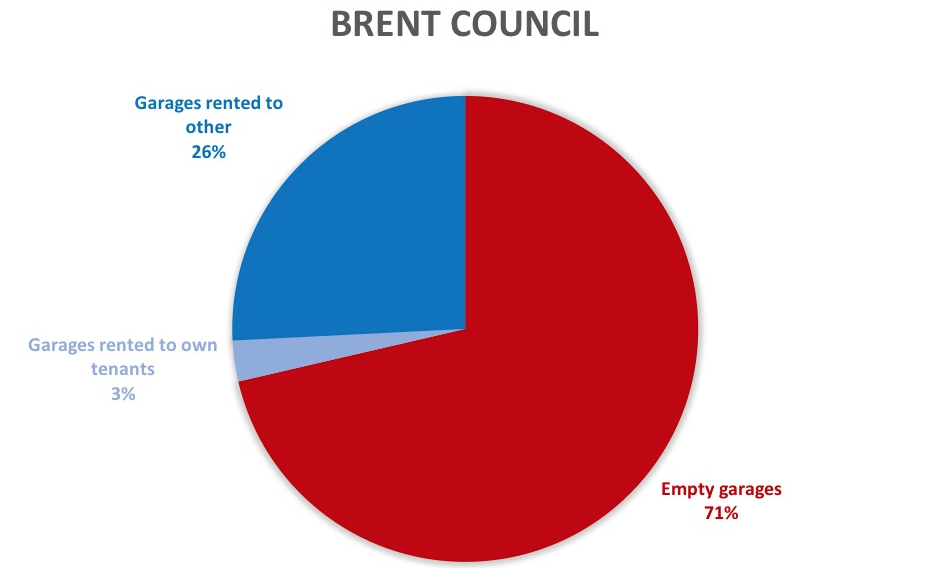
Councils are sitting on more than 22,000 empty garages in London, with total local authority stock equivalent to at least 16,000 homes if converted into the average one-bed flat, according to new research by property crowdfunding platform Property Partner.
The data, obtained from Freedom Information requests, revealed 24 out of London’s 32 councils own 53,640 lock-up garages in the capital and 41% of them are either empty or in disrepair. The highest figures are in the Ealing, Havering, Brent and Enfield boroughs, which have respectively 74% (1,480 empty garages), 72% (1,469), 71% (1,234) and 70% (2,008) lying idle.
Interestingly, the research also shows that on average only 45% of those garages that are rented out are actually let to council tenants. For example, the London Borough of Brent rents out just one in 10 of its lock-ups to its own tenants. By contrast, Lewisham which has 90% (1,920) occupancy of its garages has let out the majority (94%) to council tenants.
However, Southwark Council, which owns the highest number of garages (6,624) in the capital, has 1,891 standing empty (29%). If all its lock-ups were turned into single-storey one-bed flats, the total square footage would potentially equate to at least 1,989 new homes (if it was feasible for them to be built).
Researchers at Property Partner calculated that the total square footage of council-owned garages in London was more than eight million (the average size of a council-owned garage — almost 150ft2 — multiplied by the number of garages in each London borough).
Assuming the garages would be replaced with flats if the councils decided to sell the land for development or build affordable homes themselves, the total square footage in each borough was then divided by the average square foot (499.4ft2) for a one-bed flat in the UK.
A conservative estimate of 16,111 new homes was reached if only one level of garages were converted into one-bed apartments. But for example, that number would possibly increase by at least fourfold to more than 64,400 new properties if four-storey apartment blocks were built in a viable location.
This would have a significant impact on reducing London’s housing shortage. According to the London Assembly, the capital needs between 49,000 and 80,000 homes per year to cope with the projected population growth of a million in the next 10 years. Yet, London is delivering less than half, and maybe only a quarter of the new homes it needs annually.
Dan Gandesha, CEO of Property Partner, commented: “This is just a snapshot of publicly owned land in London which is clearly surplus to requirement, underused or undeveloped. When we have a crisis in affordable housing not just in the capital but in the UK, it begs the question whether councils in Britain should either sell off the land for development or build new homes themselves.
“If a significant number of council garages, which are part of housing estates, are not even rented to those who should have a right to them — local authority tenants – then it could be argued that this is a wasted opportunity.
“But there’s an even bigger opportunity here to ameliorate the severe shortfall in housing stock. Consider how much land Transport for London, Network Rail, the NHS, the Ministry of Defence and other government departments and agencies own.
“In the face of a residential property shortage, the former head of the UK Civil Service Lord Kerslake described this as one of the ‘biggest public policy failures of the last fifty years’. Although, making better use of underused council garages is not the absolute solution, it could seriously help alleviate the capital’s affordable housing crisis.
“London’s mayor Sadiq Khan has publicly stated housing is a key issue for him and says he’s working closely with ‘partners’ to ensure more affordable homes are built on empty public land. This is very welcome news and hopefully our research about garages will help in someway to stir councils into urgent action. We full heartedly welcome his promise to invest — with support from government — more than £3bn to help start build 90,000 affordable homes by 2021.”








